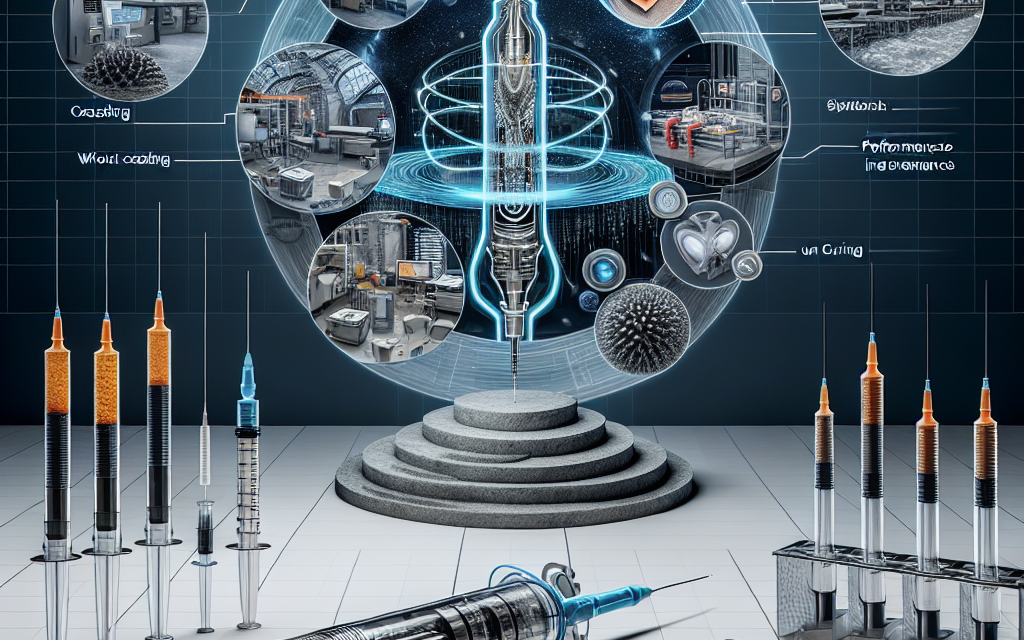Boosting Medical Device Efficiency Through Advanced Coating Technologies
The medical device industry is at the forefront of innovation, constantly evolving to meet the demands of healthcare providers and patients alike. One of the most significant advancements in this field is the development of advanced coating technologies. These coatings not only enhance the performance and longevity of medical devices but also improve patient outcomes and safety. This article delves into the various aspects of advanced coating technologies, exploring their types, applications, benefits, and future trends in the medical device sector.
1. Understanding Advanced Coating Technologies
Advanced coating technologies refer to the application of specialized materials on the surfaces of medical devices to enhance their properties. These coatings can provide a range of benefits, including improved biocompatibility, reduced friction, enhanced durability, and antimicrobial properties. The choice of coating technology depends on the specific requirements of the medical device and its intended use.
1.1 Types of Coating Technologies
There are several types of coating technologies used in the medical device industry, each with unique properties and applications:
- Polymeric Coatings: These are made from polymers and are often used to improve biocompatibility and reduce friction. They can be applied to devices such as catheters and stents.
- Metallic Coatings: Metallic coatings, such as titanium or gold, are used to enhance corrosion resistance and improve wear properties. They are commonly found in orthopedic implants.
- Bioceramic Coatings: These coatings are designed to promote osseointegration and are often used in dental and orthopedic implants.
- Antimicrobial Coatings: These coatings are engineered to prevent microbial growth, reducing the risk of infections associated with medical devices.
- Hydrophilic and Hydrophobic Coatings: These coatings alter the wettability of surfaces, improving lubrication or reducing biofouling, depending on the application.
1.2 The Importance of Coatings in Medical Devices
Coatings play a crucial role in the performance of medical devices. They can significantly influence the device’s interaction with biological tissues and fluids. For instance, a well-designed coating can enhance the biocompatibility of an implant, reducing the risk of rejection by the body. Additionally, coatings can improve the mechanical properties of devices, making them more durable and reliable in clinical settings.
2. Enhancing Biocompatibility with Advanced Coatings
Biocompatibility is a critical factor in the design of medical devices, as it determines how well a device interacts with biological systems. Advanced coatings can significantly enhance the biocompatibility of devices, making them safer for patients.
2.1 Mechanisms of Biocompatibility Improvement
Advanced coatings improve biocompatibility through various mechanisms:
- Surface Modification: Coatings can modify the surface properties of devices, such as roughness and chemical composition, to promote favorable biological responses.
- Release of Bioactive Agents: Some coatings are designed to release bioactive agents that promote cell adhesion and proliferation, enhancing tissue integration.
- Reduction of Inflammatory Responses: Coatings can be engineered to minimize inflammatory responses, reducing the risk of complications post-implantation.
2.2 Case Studies in Biocompatibility
Several studies have demonstrated the effectiveness of advanced coatings in improving biocompatibility:
- Coated Stents: Research has shown that drug-eluting stents with polymeric coatings significantly reduce restenosis rates compared to bare-metal stents.
- Orthopedic Implants: Titanium implants coated with hydroxyapatite have shown improved osseointegration, leading to better long-term outcomes in patients.
2.3 Regulatory Considerations
When developing advanced coatings for medical devices, manufacturers must adhere to strict regulatory guidelines. The FDA and other regulatory bodies require comprehensive testing to ensure that coatings are safe and effective. This includes biocompatibility testing, which assesses the device’s interaction with biological tissues.
3. Improving Device Longevity and Performance
Advanced coatings can significantly enhance the longevity and performance of medical devices, reducing the need for replacements and improving patient outcomes.
3.1 Wear and Corrosion Resistance
One of the primary benefits of advanced coatings is their ability to improve wear and corrosion resistance:
- Wear Resistance: Coatings such as diamond-like carbon (DLC) can provide exceptional wear resistance, making them ideal for devices subjected to mechanical stress.
- Corrosion Resistance: Metallic coatings, such as titanium nitride, can protect devices from corrosion, extending their lifespan in harsh biological environments.
3.2 Case Studies in Longevity
Numerous studies highlight the impact of advanced coatings on device longevity:
- Cardiac Devices: Coated pacemakers have shown a significant reduction in failure rates due to improved corrosion resistance.
- Joint Implants: Coatings that enhance wear resistance have led to longer-lasting orthopedic implants, reducing the need for revision surgeries.
3.3 Economic Implications
The economic implications of improved device longevity are substantial. By reducing the need for replacements and associated healthcare costs, advanced coatings can lead to significant savings for healthcare systems. For instance, a study estimated that the use of advanced coatings in orthopedic implants could save millions in revision surgery costs annually.
4. Antimicrobial Coatings: A Solution to Infection Risks
Infections associated with medical devices are a significant concern in healthcare. Advanced antimicrobial coatings offer a promising solution to this problem.
4.1 Mechanisms of Antimicrobial Action
Antimicrobial coatings work through various mechanisms to prevent microbial colonization:
- Release of Antimicrobial Agents: Some coatings are designed to release antimicrobial agents over time, effectively killing bacteria on the device surface.
- Surface Modification: Coatings can alter the surface properties to make it less conducive to bacterial adhesion.
4.2 Case Studies in Antimicrobial Coatings
Several studies have demonstrated the effectiveness of antimicrobial coatings:
- Catheters: Antimicrobial-coated catheters have shown a significant reduction in catheter-associated urinary tract infections.
- Surgical Implants: Coated orthopedic implants have demonstrated lower infection rates compared to uncoated devices.
4.3 Regulatory Challenges
While antimicrobial coatings offer significant benefits, they also face regulatory challenges. Manufacturers must provide evidence of safety and efficacy, particularly regarding the potential for antimicrobial resistance. This requires comprehensive testing and adherence to regulatory guidelines.
5. Future Trends in Coating Technologies
The field of advanced coating technologies is rapidly evolving, with several trends shaping the future of medical devices.
5.1 Nanotechnology in Coatings
Nanotechnology is poised to revolutionize coating technologies. By manipulating materials at the nanoscale, manufacturers can create coatings with enhanced properties:
- Improved Antimicrobial Properties: Nanoparticles can enhance the antimicrobial efficacy of coatings, providing better protection against infections.
- Enhanced Biocompatibility: Nanostructured coatings can promote better cell adhesion and proliferation, improving biocompatibility.
5.2 Smart Coatings
Smart coatings that respond to environmental stimuli are gaining traction. These coatings can change their properties in response to factors such as pH, temperature, or the presence of specific biomolecules:
- Self-Healing Coatings: These coatings can repair themselves when damaged, extending the lifespan of medical devices.
- Responsive Antimicrobial Coatings: Coatings that release antimicrobial agents in response to bacterial presence can provide targeted protection.
5.3 Sustainability in Coating Technologies
As the medical device industry moves towards sustainability, there is a growing emphasis on eco-friendly coating technologies. Manufacturers are exploring biodegradable materials and processes that minimize environmental impact.
Conclusion
Advanced coating technologies are transforming the medical device industry, enhancing biocompatibility, improving longevity, and reducing infection risks. As the field continues to evolve, innovations such as nanotechnology and smart coatings promise to further enhance the performance of medical devices. By investing in advanced coatings, manufacturers can not only improve patient outcomes but also contribute to a more sustainable healthcare system.
In summary, the integration of advanced coating technologies into medical devices represents a significant leap forward in healthcare innovation. As we look to the future, continued research and development in this area will be crucial in addressing the challenges faced by the medical device industry and improving the quality of care for patients worldwide.





